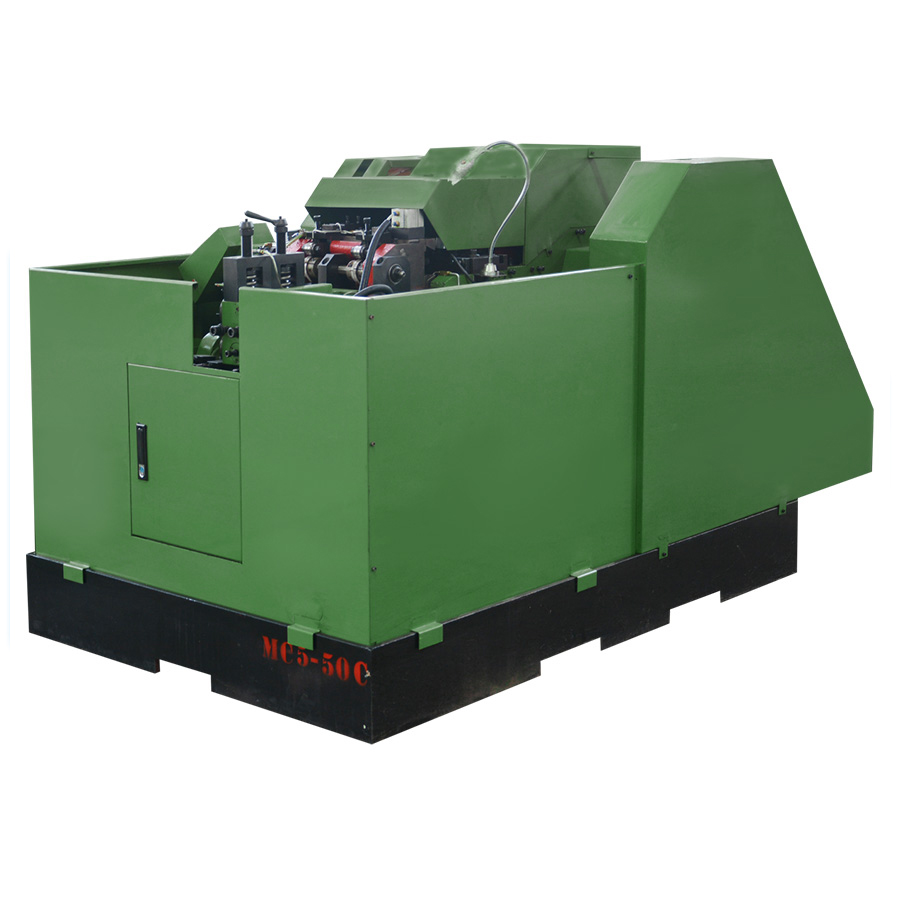1. What is an Automatic 2-Die 3-Blow Cold Heading Machine?
An Automatic 2-Die 3-Blow Cold Heading Machine is a specialized industrial machine designed to form parts, such as bolts, screws, and rivets, by cold forging. It uses two dies and applies three sequential blows to the material to shape it accurately.
2. How does the 3-Blow process work?
The 3-Blow process involves:
First Blow (Upsetting): The wire is upset or expanded to increase its cross-sectional area, preparing it for heading.
Second Blow (Heading): The material is forced into the die to form the head of the part.
Third Blow (Finishing): This blow refines the shape and may include adding features like chamfers or secondary shaping.
3. What types of materials can be used?
Typically, the machine works with a variety of metals, including:
Carbon steel
Stainless steel
Brass
Aluminum
4. What are the benefits of using a 2-Die 3-Blow machine?
Benefits include:
High Efficiency: Fast production rates.
Cost-Effective: Reduces material waste compared to cutting processes.
Strength: Cold heading strengthens the material by work hardening.
Consistency: Ensures uniformity in parts produced.
5. Can it handle complex shapes?
Yes, though complex shapes may require customized dies and additional tooling. The machine is versatile and can handle a wide range of shapes and sizes within its capabilities.
6. What is the typical production capacity?
Production capacity varies by model and configuration. Some machines can produce thousands of parts per hour. Consult the manufacturer’s specifications for exact numbers.
7. How is the machine controlled?
Modern machines are often controlled via a computerized interface that allows for precise setting adjustments, monitoring, and automation of the production process.
8. What maintenance is required?
Regular maintenance includes:
Lubrication of moving parts.
Cleaning of the machine.
Inspection and replacement of worn parts.
Calibration of sensors and controls.
9. Is operator training necessary?
Yes, operators should be trained to understand the machine’s functions, safety protocols, and basic troubleshooting techniques.
10. What safety features are included?
Safety features commonly include:
11. How does the machine handle wire feeding?
The machine typically uses an automatic wire feeding system that guides the wire through the machine, ensuring it is correctly positioned for each operation.
12. Where can I find replacement parts and service?
Replacement parts and service are usually provided by the manufacturer or authorized dealers. It’s important to use genuine parts to maintain the machine’s performance and warranty.
13. Can the machine be integrated with other systems?
Yes, many models can be integrated with other manufacturing systems, such as quality control stations or material handling systems, for a more streamlined production line.
14. What kind of power supply does the machine require?
Power requirements vary by model. Check the manufacturer’s specifications for the exact voltage and current requirements.
15. What are the environmental considerations?
Considerations include:
Noise levels during operation.
Proper ventilation to manage any dust or fumes generated.
Compliance with local environmental regulations.




















































